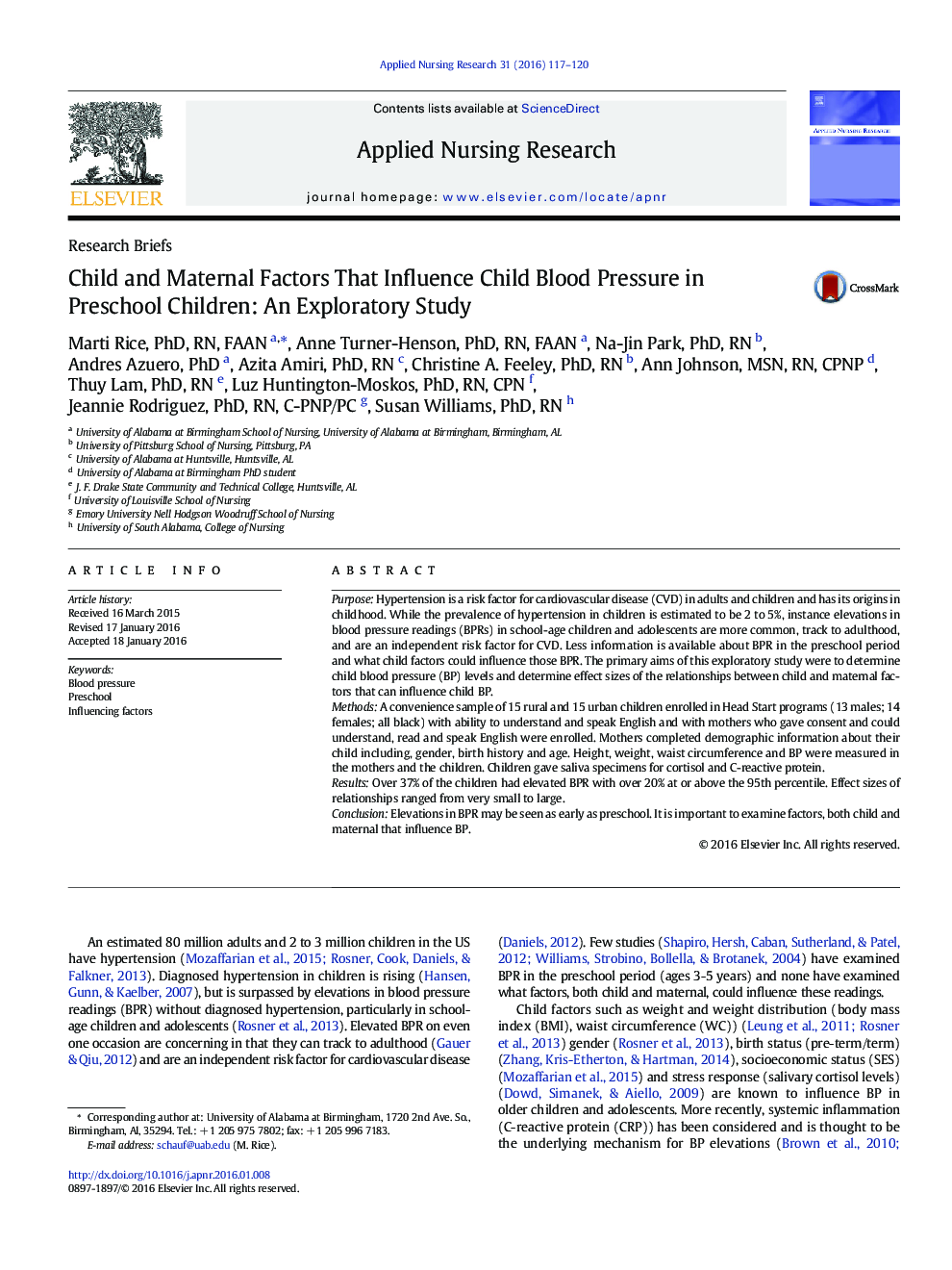| Article ID | Journal | Published Year | Pages | File Type |
|---|---|---|---|---|
| 2644967 | Applied Nursing Research | 2016 | 4 Pages |
PurposeHypertension is a risk factor for cardiovascular disease (CVD) in adults and children and has its origins in childhood. While the prevalence of hypertension in children is estimated to be 2 to 5%, instance elevations in blood pressure readings (BPRs) in school-age children and adolescents are more common, track to adulthood, and are an independent risk factor for CVD. Less information is available about BPR in the preschool period and what child factors could influence those BPR. The primary aims of this exploratory study were to determine child blood pressure (BP) levels and determine effect sizes of the relationships between child and maternal factors that can influence child BP.MethodsA convenience sample of 15 rural and 15 urban children enrolled in Head Start programs (13 males; 14 females; all black) with ability to understand and speak English and with mothers who gave consent and could understand, read and speak English were enrolled. Mothers completed demographic information about their child including, gender, birth history and age. Height, weight, waist circumference and BP were measured in the mothers and the children. Children gave saliva specimens for cortisol and C-reactive protein.ResultsOver 37% of the children had elevated BPR with over 20% at or above the 95th percentile. Effect sizes of relationships ranged from very small to large.ConclusionElevations in BPR may be seen as early as preschool. It is important to examine factors, both child and maternal that influence BP.
